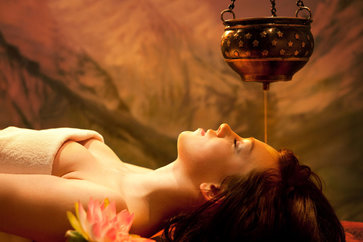Ayurveda’s Guide to Sex: Top Positions and Herbal Enhancements
In today’s world, the pursuit of optimal health and well-being often leads individuals to explore diverse and holistic approaches. Among these, Ayurveda—a centuries-old system of medicine originating from India—has garnered increasing interest for its comprehensive approach to wellness. 
Ayurveda encompasses a broad range of practices and principles, offering insights into maintaining balance and harmony in all aspects of life, including sexual health.
The Principles of Ayurveda
Ayurveda, which translates to “the science of life,” is rooted in the belief that health and well-being depend on a harmonious balance between the body, mind, and spirit. Its principles are based on a holistic understanding of the human body and its relationship with nature. Key concepts include:
1. The Three Doshas:
Ayurveda identifies three primary energies or doshas—Vata (air and space), Pitta (fire and water), and Kapha (earth and water). Each dosha represents different aspects of physiological and psychological functions. Balance among these doshas is crucial for maintaining health, including sexual health.
2. The Five Elements:
These doshas are derived from the five elements (earth, water, fire, air, and space), which combine to form the physical and mental characteristics of an individual. Understanding how these elements interact helps in diagnosing imbalances and tailoring treatments.
3. Prakriti (Constitution):
Each individual has a unique constitution or prakriti, which is a combination of the doshas present at birth. This inherent balance influences a person’s physical characteristics, tendencies, and predispositions.
4. Agni (Digestive Fire):
In Ayurveda, Agni refers to the digestive fire or metabolism. Proper digestion is essential for overall health, including sexual vitality. A strong Agni ensures that nutrients are efficiently absorbed, supporting all bodily functions.
5. Sattva, Rajas, and Tamas:
These are the three gunas or qualities of the mind. Sattva represents purity and harmony, Rajas denotes activity and restlessness, and Tamas signifies inertia and darkness. The balance among these gunas influences mental health, which is closely linked to sexual health.
The Importance of Balance in Sexual Health
In Ayurveda, sexual health is not merely about physical function but is viewed as an integral aspect of overall well-being. The following points highlight why balance is crucial:
1. Dosha Imbalance:
Sexual health can be significantly affected by imbalances in the doshas. For instance, an excess of Vata may lead to issues like dryness and decreased libido, while an excess of Pitta might cause inflammation and aggression. Kapha imbalances could result in lethargy and reduced desire.
2. Emotional and Mental Health:
Ayurveda acknowledges the connection between mental and emotional states and sexual health. Stress, anxiety, and emotional imbalances can disrupt the natural flow of energy and affect sexual desire and function. Cultivating mental clarity and emotional stability is therefore essential.
3. Lifestyle and Diet:
Ayurveda emphasizes the role of lifestyle and diet in maintaining dosha balance. A well-rounded approach that includes balanced nutrition, appropriate physical activity, and restorative practices can enhance sexual health. For example, incorporating foods that balance Vata or Pitta can support healthy sexual function.
4. Seasonal and Environmental Factors:
The changing seasons and environmental conditions can influence dosha balance and, consequently, sexual health. Adapting lifestyle and dietary practices to align with seasonal changes can help maintain equilibrium.
In essence, Ayurveda provides a framework for understanding and nurturing sexual health through a holistic approach that integrates physical, emotional, and spiritual well-being. By focusing on achieving balance and harmony within the body and mind, Ayurveda aims to enhance overall vitality and enrich the sexual experience.
Doshas and Sexual Compatibility
In Ayurveda, sexual compatibility and overall well-being are deeply intertwined with the concept of doshas. Each person has a unique combination of the three doshas—Vata, Pitta, and Kapha—that influences their physical, emotional, and psychological characteristics.
Understanding these doshas can provide insights into how different individuals interact and how to achieve harmony in intimate relationships.
1. Vata Dosha and Its Characteristics
Vata is composed of the elements of air and space, and it is associated with qualities like lightness, dryness, coolness, and mobility.
- Physical Characteristics: People with a dominant Vata dosha often have a slender, delicate build, with irregular appetite and digestion. They may experience fluctuating energy levels and a tendency toward dryness in their skin and mucous membranes.
- Emotional and Mental Traits: Vata individuals are typically creative, energetic, and enthusiastic but may also experience variability in mood, anxiety, and nervousness. They are often quick to respond to stimuli but may struggle with consistency.
- Sexual Health and Compatibility: In intimate relationships, Vata individuals may have a variable libido and may be prone to issues such as dryness or sensitivity. They benefit from partners who provide warmth, grounding, and stability. Warm, nurturing environments and regular routines can help balance Vata and enhance sexual satisfaction.
2. Pitta Dosha and Its Characteristics
Pitta is made up of the elements of fire and water, and it embodies qualities like heat, sharpness, intensity, and fluidity.
- Physical Characteristics: Those with a dominant Pitta dosha tend to have a medium build, with a strong appetite and robust digestion. They often have warm, oily skin and may sweat easily. Pitta individuals usually exhibit a high energy level and a dynamic, assertive demeanor.
- Emotional and Mental Traits: Pitta types are known for their intelligence, determination, and leadership qualities. However, they can also be prone to irritability, impatience, and intensity. They may experience strong emotions and drive.
- Sexual Health and Compatibility: Pitta individuals typically have a strong libido and an intense approach to intimacy. They may benefit from partners who can match their energy and passion while providing balance and relaxation. To avoid overheating and irritability, creating a calm and cool environment during intimate moments is beneficial.
3. Kapha Dosha and Its Characteristics
Kapha consists of the elements of earth and water, and it is characterized by qualities such as heaviness, stability, coolness, and solidity.
- Physical Characteristics: People with a predominant Kapha dosha often have a robust, heavier build with a tendency towards fluid retention and a slower metabolism. They usually have smooth, oily skin and a steady, calm demeanor.
- Emotional and Mental Traits: Kapha individuals are typically nurturing, loyal, and compassionate. They can also be prone to lethargy, resistance to change, and possessiveness. Their emotions are usually stable but may become sluggish or stagnant.
- Sexual Health and Compatibility: Kapha individuals may have a steady, reliable libido, but they might experience challenges with low desire or lack of excitement. They benefit from partners who bring excitement and dynamism into the relationship. Engaging in stimulating activities and incorporating variety can help invigorate their sexual life.
Sexual Compatibility Across Doshas
Understanding the doshas can help enhance sexual compatibility and harmony between partners:
1. Vata and Pitta:
This combination can be dynamic and passionate, as Vata brings creativity and enthusiasm while Pitta contributes intensity and drive. However, it is crucial for Vata to ground the relationship and for Pitta to temper its intensity to avoid conflicts and burnout.
2. Vata and Kapha:
Vata’s spontaneity and Kapha’s stability can create a balanced and nurturing relationship. Vata can bring excitement and variety, while Kapha provides grounding and support. This pairing benefits from mutual understanding and adjustments in pace to maintain harmony.
3. Pitta and Kapha:
This pairing can be complementary, with Pitta’s energy and Kapha’s steadiness creating a balanced dynamic. However, Kapha’s potential lethargy can clash with Pitta’s intensity. Effective communication and finding a balance between activity and relaxation are key to a successful relationship.
By recognizing and respecting each other’s dosha characteristics, partners can create a harmonious and fulfilling sexual relationship that aligns with their unique qualities and needs.
The Role of Ayurveda in Sexual Positions
Ayurveda, with its holistic approach to health, extends its principles to various aspects of life, including sexual practices.
While traditional Ayurveda does not prescribe specific sexual positions, it offers insights into how different positions can align with the dosha imbalances and overall well-being.
Understanding these connections can enhance the sexual experience and promote balance and harmony.
How Ayurveda Influences Sexual Positions
Balancing Doshas: Different sexual positions can be more or less suitable depending on an individual’s dosha and its current state. For instance:
1. Vata Dosha:
Individuals with a dominant Vata dosha may benefit from positions that provide grounding and stability. Since Vata is characterized by lightness and mobility, positions that are more stable and involve close physical contact can help create a sense of grounding and warmth.
2. Pitta Dosha:
For those with a strong Pitta influence, positions that promote relaxation and coolness can be beneficial. Pitta types may prefer positions that are less intense and more soothing, as this can help counteract their natural intensity and potential for overheating.
3. Kapha Dosha:
People with a predominant Kapha dosha might benefit from positions that stimulate energy and movement. Since Kapha is characterized by heaviness and stability, incorporating positions that introduce variety and encourage dynamic engagement can help invigorate the sexual experience.
4. Alignment with Energetic Needs:
Ayurveda emphasizes the alignment of sexual practices with the body’s energy levels and needs. Positions that align with these needs can enhance pleasure and overall satisfaction:
5. Energy Flow:
Positions that support the smooth flow of energy and avoid excessive strain can help maintain balance and prevent discomfort. For instance, positions that allow for relaxation and proper alignment of the body can be more beneficial.
6. Mental State:
Ayurvedic principles also consider the mental and emotional state. Positions that foster intimacy and connection can be advantageous for mental well-being and emotional satisfaction.
7. Personal Comfort and Adaptation:
Ayurveda acknowledges individual differences and encourages adapting practices to personal comfort. Listening to one’s body and preferences is essential. The goal is to find positions that enhance comfort, pleasure, and connection while supporting overall health and balance.
Benefits of Ayurvedic Sexual Practices
1. Enhanced Harmony and Balance: Ayurvedic sexual practices emphasize balance and harmony in both physical and emotional aspects. By aligning sexual activities with dosha characteristics and individual needs, couples can achieve a more harmonious and fulfilling sexual experience.
2. Improved Physical Health: Practicing sexual positions and techniques that align with Ayurvedic principles can contribute to better physical health. For example, positions that support proper alignment and reduce strain can help prevent physical discomfort and enhance overall well-being.
3. Emotional and Mental Well-being: Ayurveda values the integration of mind and body. Sexual practices that promote emotional intimacy and mental relaxation can lead to greater satisfaction and reduce stress. This holistic approach helps foster a deeper emotional connection between partners.
4. Increased Awareness and Mindfulness: Ayurvedic practices encourage mindfulness and awareness in all aspects of life, including sexual intimacy. By being attentive to one’s body, energy levels, and emotional state, individuals can cultivate a more conscious and connected sexual experience.
5. Restoration of Dosha Imbalances: Ayurvedic sexual practices can help address dosha imbalances. For instance, engaging in calming and grounding positions can help balance excess Vata, while soothing and cooling practices can alleviate excess Pitta. For Kapha, dynamic and invigorating positions can help counterbalance sluggishness and heaviness.
6. Promotion of Overall Wellness: Integrating Ayurvedic principles into sexual practices supports overall wellness. By considering dosha balance, energy flow, and personal comfort, individuals and couples can enhance their sexual health while promoting general well-being.
In summary, while Ayurveda does not prescribe specific sexual positions, its principles provide valuable guidance for aligning sexual practices with individual dosha characteristics and overall health.
By incorporating Ayurvedic insights, individuals can enhance their sexual experience, achieve greater balance, and foster a deeper connection with their partner.
Best Sex Positions for Vata Dosha
Vata dosha, characterized by qualities of lightness, dryness, and coolness, benefits from sexual positions that provide grounding, warmth, and stability. Individuals with a predominant Vata dosha may find certain positions more satisfying and balancing.
Recommended Positions
1. Spooning (Side-by-Side): This position involves lying on one’s side with the partner behind, which provides warmth and close contact. The spooning position allows for gentle and steady movements, helping to ground Vata energy and enhance intimacy.
2. Missionary with Pillows: Placing a pillow under the hips in the missionary position can create a supportive and stable base. This modification helps to ground Vata individuals and can alleviate any feelings of instability or discomfort.
3. Cowgirl (Partner on Top): In this position, the Vata individual is lying down, while their partner is on top. This position allows the Vata partner to remain relaxed and supported, as the other partner takes an active role in the movement.
4. Cradle Position: This position involves one partner lying on their back with their legs elevated and the other partner entering from a kneeling or standing position.
The cradle position provides physical support and stability, which is beneficial for balancing Vata.
Benefits and Considerations
Benefits:
- Grounding and Stability: Positions that offer physical support and stability help counteract Vata’s tendency towards restlessness and instability.
- Warmth and Intimacy: Close contact and warmth are essential for Vata individuals, helping to create a soothing and nurturing experience.
- Reduced Dryness: Supportive positions can help address issues related to dryness, making the experience more comfortable.
Considerations:
- Gentle Movements: Avoid positions that are too vigorous or require excessive physical exertion, as they may exacerbate Vata imbalances.
- Warm Environment: Ensure that the environment is warm and cozy to complement the grounding nature of the positions.
Best Sex Positions for Pitta Dosha
Pitta dosha, known for its fiery and intense qualities, benefits from sexual positions that promote cooling, relaxation, and less intensity. Individuals with a dominant Pitta dosha may find that certain positions help manage their natural heat and intensity.
Recommended Positions
1. Modified Missionary: The standard missionary position with slight modifications—such as using pillows for extra support—can help create a balanced and relaxed experience. This position allows for close contact and intimacy while keeping intensity in check.
2. Cowgirl (Partner on Top): In this position, the Pitta individual can lie down while their partner takes a more active role. This arrangement helps control the intensity and allows Pitta individuals to focus on relaxation and enjoyment.
3. Reverse Cowgirl: Similar to the cowgirl position but with the partner facing away, this position can help Pitta individuals experience variety and stimulation without overwhelming intensity.
4. Spooning (Side-by-Side): The spooning position offers a soothing and close contact experience, which can help counteract Pitta’s heat and intensity.
Benefits and Considerations
Benefits:
- Cooling Effect: Positions that emphasize relaxation and gentleness help counterbalance Pitta’s natural heat and intensity.
- Increased Intimacy: Close and nurturing positions foster emotional connection and intimacy, aligning with Pitta’s desire for meaningful interactions.
Considerations:
- Avoid Overstimulation: Pitta individuals should avoid positions or practices that may exacerbate their fiery nature or lead to overheating.
- Calm Environment: Ensure a cool and calming environment to help balance Pitta’s heat.
Best Sex Positions for Kapha Dosha
Kapha dosha, characterized by heaviness, stability, and sluggishness, benefits from sexual positions that introduce energy, variety, and stimulation.
Individuals with a dominant Kapha dosha may find certain positions more invigorating and energizing.
Recommended Positions
1. Doggy Style: This position involves one partner on all fours while the other partner enters from behind. The dynamic and active nature of this position can help stimulate Kapha energy and counteract any sluggishness.
2. Standing Positions: Positions that involve standing or semi-standing, such as the standing wheelbarrow, can help engage Kapha individuals and introduce variety and movement.
3. Cowgirl (Partner on Top): This position, where the Kapha individual lies down and their partner takes an active role, can help introduce energy and dynamism into the experience.
4. Reverse Cowgirl: Similar to the standard cowgirl but with the partner facing away, this position provides variety and stimulation, helping to invigorate Kapha energy.
Benefits and Considerations
Benefits:
- Increased Stimulation: Positions that promote activity and variety help to counteract Kapha’s natural heaviness and sluggishness.
- Energy Boost: Dynamic positions can help invigorate Kapha individuals and enhance their sexual experience.
Considerations:
- Variety and Movement: Kapha individuals should incorporate positions and practices that introduce movement and excitement to avoid stagnation.
- Energetic Engagement: Ensure that both partners are engaged and that the experience is stimulating to keep Kapha energy balanced.
By understanding and applying Ayurvedic principles to sexual positions, individuals can tailor their experiences to their dosha characteristics, enhancing pleasure, comfort, and balance.
General Tips for Ayurvedic Sexual Practices
Ayurvedic sexual practices emphasize balance, harmony, and alignment with the body’s natural rhythms. To maximize the benefits of these practices, it is essential to create an environment and lifestyle that support overall well-being.
Creating a Harmonious Environment
1. Warm and Comfortable Space: Ensure that the environment is warm, inviting, and comfortable. Ayurveda values warmth and relaxation, which can enhance intimacy and help individuals feel more grounded. Soft lighting, pleasant aromas (such as essential oils), and comfortable bedding can contribute to a soothing atmosphere.
2. Emotional Safety: Foster a space of emotional openness and trust. Effective communication and emotional connection between partners are crucial for a fulfilling sexual experience. Create an environment where both partners feel safe to express their needs and desires.
3. Mindful Atmosphere: Engage in practices that promote mindfulness and presence. This could include calming background music, deep breathing exercises, or meditation before intimacy. A mindful approach helps individuals connect more deeply with themselves and their partners.
4. Declutter and Clean: A clean and organized space contributes to mental clarity and relaxation. A clutter-free environment helps reduce stress and creates a more pleasant and inviting setting for intimacy.
The Role of Diet and Lifestyle in Sexual Life
- Balanced Diet: Ayurveda emphasizes the importance of a balanced diet for overall health, including sexual health. Consuming foods that support dosha balance can improve energy levels, mood, and vitality. For instance, Vata types may benefit from warm, oily foods; Pitta types from cooling, soothing foods; and Kapha types from stimulating light foods.
- Hydration: Proper hydration is essential for maintaining bodily functions and supporting sexual health. Drinking adequate water and consuming hydrating foods can help maintain energy levels and ensure comfort during intimacy.
- Regular Exercise: Engaging in regular physical activity helps balance the doshas and supports overall health. Exercise enhances circulation, reduces stress, and increases energy levels, all of which contribute to a more satisfying sexual experience.
- Adequate Sleep: Quality sleep is crucial for overall well-being and sexual health. Ensuring sufficient rest supports energy levels, mood regulation, and physical health, making it easier to engage in and enjoy intimate experiences.
- Stress Management: Managing stress through relaxation techniques, such as yoga, meditation, or deep breathing, helps maintain emotional balance and reduce any negative impact on sexual health. A relaxed state enhances enjoyment and connection during intimacy.
The Connection Between Sexual Health and Overall Well-being
Sexual health is closely linked to overall well-being, encompassing both mental and physical aspects. Understanding this connection can help individuals foster a more balanced and fulfilling life.
Mental Health Benefits
- Improved Mood: Engaging in healthy sexual activity releases endorphins and other feel-good hormones that improve mood and reduce feelings of stress and anxiety. Positive sexual experiences can contribute to overall emotional well-being.
- Enhanced Emotional Connection: Healthy sexual relationships foster emotional intimacy and strengthen bonds between partners. This connection can lead to increased feelings of security, trust, and happiness in both the relationship and individual life.
- Stress Relief: Sexual activity can be a natural stress reliever, helping to lower cortisol levels and induce relaxation. This reduction in stress contributes to improved mental clarity and emotional stability.
- Self-Esteem and Body Image: A fulfilling sexual life can positively impact self-esteem and body image. Feeling desired and connected in an intimate setting enhances self-worth and body confidence.
Physical Health Benefits
- Increased Vitality: Sexual activity promotes physical health by improving circulation, boosting energy levels, and enhancing overall vitality. Regular activity supports cardiovascular health and overall physical fitness.
- Pain Relief: Sexual activity has been shown to have analgesic effects, helping to relieve pain through the release of endorphins and other natural painkillers. This can contribute to overall physical comfort and well-being.
- Hormonal Balance: Healthy sexual activity supports hormonal balance and reproductive health. Engaging in regular sexual activity can help regulate hormones, contributing to overall physical health.
- Muscle Tone and Flexibility: Certain sexual positions and activities can enhance muscle tone and flexibility. This contributes to overall physical fitness and supports joint health.
In summary, integrating Ayurvedic principles into sexual practices can enhance both mental and physical well-being.
By creating a harmonious environment, maintaining a balanced diet and lifestyle, and recognizing the connection between sexual health and overall well-being, individuals can achieve greater satisfaction and balance in their lives.
Common Myths About Ayurvedic Sexual Practices
Ayurveda, with its ancient wisdom and holistic approach, often encounters misconceptions, particularly when it comes to its application in sexual practices.
These myths can lead to misunderstandings and prevent individuals from fully benefiting from Ayurvedic principles. Here’s a look at some common myths about Ayurvedic sexual practices and the truth behind them.
Myth 1: Ayurveda Prescribes Specific Sexual Positions
- Misconception: Ayurveda offers a set of specific sexual positions for optimal sexual health and satisfaction.
- Reality: Ayurveda does not prescribe specific sexual positions. Instead, it focuses on balancing the doshas (Vata, Pitta, Kapha) and aligning sexual practices with individual needs. The emphasis is on creating a harmonious experience that supports overall well-being rather than on particular positions.
Myth 2: Ayurvedic Sexual Practices are Only for Physical Health
- Misconception: Ayurvedic sexual practices are primarily concerned with physical health and ignore emotional and mental aspects.
- Reality: Ayurveda considers sexual health as a holistic aspect of well-being, integrating physical, emotional, and mental dimensions. Ayurvedic sexual practices aim to achieve balance and harmony in all these areas, recognizing that emotional and mental health significantly impact sexual satisfaction and overall wellness.
Myth 3: Ayurveda Requires Exotic or Complex Rituals for Sexual Health
- Misconception: Ayurvedic sexual health requires elaborate rituals or exotic practices that are difficult to incorporate into daily life.
- Reality: Ayurvedic practices can be simple and practical, focusing on balance and moderation. Recommendations often include maintaining a balanced diet, managing stress, and creating a comfortable environment—practices that are easy to integrate into everyday life.
Myth 4: Ayurveda Is Only for Individuals with Health Issues
- Misconception: Ayurvedic sexual practices are only relevant for individuals experiencing specific health issues or imbalances.
- Reality: Ayurveda is a preventative and holistic system that benefits everyone, not just those with health issues. Its principles support general well-being and can enhance sexual health and satisfaction for individuals of all health statuses.
Myth 5: Ayurvedic Practices Are Incompatible with Modern Medicine
- Misconception: Ayurvedic practices are outdated and not compatible with contemporary medical practices.
- Reality: Ayurveda can complement modern medicine rather than replace it. Many people find that integrating Ayurvedic principles with conventional treatments supports overall health and well-being. Ayurveda offers valuable insights into lifestyle and dietary adjustments that can enhance the efficacy of modern medical interventions.
Myth 6: Ayurveda Focuses Solely on Traditional Gender Roles in Sexuality
- Misconception: Ayurvedic sexual practices are based on rigid traditional gender roles and expectations.
- Reality: While Ayurveda does include traditional perspectives, its principles are adaptable and can be applied to diverse modern contexts. The focus is on individual dosha balance and holistic health, which can be personalized to suit various gender identities and relationships.
Myth 7: Ayurvedic Sexual Practices Are Not Supported by Scientific Evidence
- Misconception: Ayurvedic practices lack scientific validation and are not evidence-based.
- Reality: While Ayurveda is an ancient system, it has been the subject of increasing research, and many of its principles are supported by modern studies. Scientific research continues to explore and validate various aspects of Ayurvedic practices, including their impact on overall health and wellness.
Myth 8: Ayurveda Promotes Abstinence or Extreme Sexual Restrictions
- Misconception: Ayurveda promotes extreme sexual restrictions or abstinence as part of its practices.
- Reality: Ayurveda advocates for moderation and balance rather than extreme measures. It encourages practices that support overall well-being, including a healthy and satisfying sexual life, based on individual needs and dosha imbalances.
In summary, understanding the truths behind these myths can help individuals better appreciate the value of Ayurvedic sexual practices.
By focusing on balance, harmony, and holistic well-being, Ayurveda offers practical and supportive approaches to enhancing sexual health and overall quality of life.
Ayurvedic Herbs and Remedies for Sexual Health
Ayurveda employs a range of herbs and remedies to support sexual health, enhance vitality, and balance the doshas. These natural treatments aim to improve libido, energy levels, and overall sexual satisfaction while addressing specific imbalances.
Here’s a guide to some commonly recommended herbs and their uses.
Recommended Herbs
1. Ashwagandha (Withania somnifera)
- Benefits: Ashwagandha, also known as Indian ginseng, is a powerful adaptogen that helps manage stress and balance hormones. It is commonly used to boost libido, enhance sexual stamina, and support overall vitality.
- How to Use: Ashwagandha can be taken in various forms, including capsules, powders, or as a tincture. A typical dose is 300-500 mg of standardized extract daily. It can also be added to warm milk or herbal teas.
2. Shatavari (Asparagus racemosus)
- Benefits: Shatavari is revered for its rejuvenating and balancing properties. It supports female reproductive health, improves libido, and helps balance the female hormonal system. It is also known to promote overall vitality and energy.
- How to Use: Shatavari is commonly used in powder form or as a supplement. A standard dose is 500-1000 mg of the powder or capsule daily. It can be taken with warm water or milk.
3. Tribulus (Tribulus terrestris)
- Benefits: Tribulus is used to enhance sexual function and increase libido. It is believed to support testosterone levels and improve overall sexual performance and satisfaction.
- How to Use: Tribulus is available in capsule, powder, or tincture form. A typical dose is 250-500 mg daily. It can be taken with water or added to smoothies.
4. Gokshura (Tribulus terrestris)
- Benefits: Gokshura, often used interchangeably with Tribulus, supports reproductive health, enhances sexual vigor, and helps balance the doshas. It is known for its rejuvenating and energy-boosting properties.
- How to Use: Gokshura is available in powder or capsule form. A usual dose is 500 mg to 1 gram of powder daily, taken with warm water or milk.
5. Maca Root (Lepidium meyenii)
- Benefits: Although not native to India, maca root is widely used in Ayurvedic practices for its libido-enhancing and energy-boosting properties. It helps balance hormones and improve sexual desire.
- How to Use: Maca root is available in powder, capsule, or tincture form. A common dosage is 1-3 grams of powder daily, which can be mixed into smoothies, soups, or juices.
6. Safed Musli (Chlorophytum borivilianum)
- Benefits: Safed Musli is traditionally used to enhance sexual function and boost overall vitality. It is known for its aphrodisiac properties and support for male and female reproductive health.
- How to Use: Safed Musli is typically consumed in powder form. A standard dose is 1-2 grams daily, mixed with milk or water.
How to Use Ayurvedic Herbs
- Herbal Teas: Many Ayurvedic herbs can be used to make herbal teas. Steep the recommended amount of dried herbs in boiling water for 5-10 minutes, then strain and drink. Herbal teas can be consumed daily or as needed.
- Powders: Herbs in powder form can be mixed with warm water, milk, or smoothies. They are often taken in the morning or evening, depending on individual needs and dosha imbalances.
- Capsules/Tablets: Herbal supplements in capsule or tablet form provide a convenient way to take Ayurvedic herbs. Follow the dosage instructions on the product label or as advised by a healthcare practitioner.
- Tinctures: Tinctures are concentrated liquid extracts of herbs. They can be taken directly or added to water or herbal teas. Follow the recommended dosage on the tincture label.
- Ghee or Oil Infusions: Some herbs can be infused into ghee (clarified butter) or oil and used as a base for traditional Ayurvedic preparations. These infusions can be used in cooking or taken directly.
- Combination Formulas: Ayurvedic practitioners often use combinations of herbs in formulations designed to address specific health concerns. These can be found in pre-made supplements or prescribed by a practitioner.
Tips for Using Ayurvedic Herbs
Consult a Practitioner: Before starting any new herbal regimen, it is advisable to consult with an Ayurvedic practitioner or healthcare provider to ensure the herbs are appropriate for your dosha and health condition.
- Start Slowly: Begin with a lower dose to observe how your body responds to the herbs, and gradually increase to the recommended dose as needed.
- Consistency is Key: For best results, take the herbs consistently and integrate them into a balanced lifestyle that includes a proper diet, exercise, and stress management.
- Monitor Effects: Pay attention to any changes in your body and overall well-being. Adjust dosages or discontinue use if you experience any adverse effects.
Incorporating Ayurvedic herbs into your routine can support sexual health and overall vitality, aligning with the principles of balance and harmony central to Ayurveda.
Ayurveda offers a holistic approach to sexual health by emphasizing the balance of the doshas and integrating various lifestyle practices and natural remedies. By understanding and applying Ayurvedic
Resources:

























